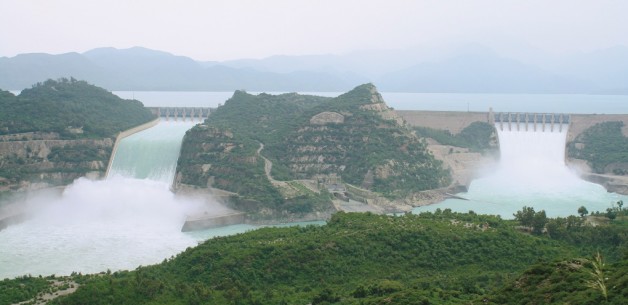The Asian Infrastructure Investment Bank and the Tarbela 5 project in Pakistan
Opening the Global Infrastructure Forum in April, President Jin Liqun thanked other multilateral banks for collaborating with the Asian Infrastructure Investment Bank – the world’s newest development bank. Jin said in its first year of operations, over 75 per cent of its projects have been co-financed with these other banks, enabling the AIIB to benefit from their experience: “The youngest can enjoy the advantage of learning from the elders”.
Learning lessons from other MDBs is a laudable goal. It could allow the AIIB to adopt best practices and avoid past mistakes, which have often resulted in huge social and environmental costs. With that in mind, the Bank Information Center Europe together with Naeem Iqbal, a researcher based in Pakistan, has just published a report on how this co-financing model is working in reality.
We investigated the case of the Tarbela 5 project in Pakistan.
Tarbela 5 was one of the first six projects approved by the AIIB in 2016. AIIB invested $300m, alongside the World Bank’s $390m and $335m from the Pakistan government. On paper the project makes perfect sense for the new bank: rather than building a new dam, the investment will boost production at an existing hydro-dam by almost 3,000 MW and link it to the national grid via new transmission lines to “provide a low cost, clean, renewable energy option”. This will help alleviate severe blackouts and expensive, unhealthy and polluting self-generation with small gasoline and diesel generators. Ostensibly, this lives up to the AIIB’s “clean and green” mantra.
But a deeper look at Tarbela 5 shows a landscape and community that have suffered extreme harms that have not yet been righted. Tens of thousands of people were displaced between the 1960s and 1990s by two mega-hydropower projects, Tarbela and Gazi Brarotha. Most were subsistence farmers and fishers. Tarbela alone submerged 120 villages. A case study for the World Commission on Dams documented significant problems with the resettlement of these affected people. To this day many thousands of families remain impoverished and are still seeking fair compensation and redress for their losses.
The AIIB has recognised this and committed that its $300m investment in Tarbela 5 will not only contribute to the new construction, but also address “social legacy issues” from the previous projects.
The Tarbela 5 project presents a significant challenge to the new bank. It is a hands-on opportunity for the AIIB to genuinely “learn from the mistakes of the past” by righting the many previous wrongs. The AIIB’s co-financier, the World Bank, was the projects’ lead backer, and so it must ensure its new partner acknowledges the mistakes that were made. Tarbela 5 is also a test of the AIIB’s environmental and social safeguards: are they strong enough to protect local people from the impacts of the new project, avoiding the grave harms that others suffered in the past?
Early indications warn that the AIIB will face very tough questions. A World Bank representative revealed to us that redress will be limited to those people who have previously filed court cases, rather than being extended to all those harmed. Project documents also confirm redress will be meted out by the Resettlement Commission, a body that has at best a chequered past: it has to date settled only 16 of the thousands of cases outstanding. Yet this limit to justice is not clear from project documents, threatening to raise false expectations among affected communities.
Construction of the new 52km transmission line and associated 160 towers will cause disruption to local farmers, who are concerned about the limited compensation on offer for just one crop cycle. More concerning is the new grid station that will displace some 260 families. Though clearly part of the Tarbela 5 project, the World Bank removed the grid station from the project to avoid the AIIB having to address land acquisition and resettlement issues, according to the WB’s representative. Excising it from the project does not however ‘disappear’ its impacts. AIIB policy is quite clear on so-called ‘associated facilities’, that their impacts must be disclosed and measures to mitigate them must be applied.
BIC Europe’s case study also points out that consultation and access to information – processes that are vital in re-building trust in the region – have not followed best practice. For instance, translations of crucial project documents in Urdu were only made public following our enquiries to the banks.
President Jin promised that poverty reduction would be a ‘derivative’ of AIIB’s projects. However, if there is one lesson the new bank must learn, it is that those who bear the cost of development – local people who are displaced, who lose access to farmlands or fisheries – are often left more marginalised and impoverished. The AIIB is relying on the World Bank for the necessary environmental and social management plans for the project; and Hamid Sharif, the head of the AIIB’s accountability mechanism, has said that it will not conduct compliance reviews for co-financed projects. However, as a co-financier of the project that has committed to address past harms, the AIIB has inherited its “elder’s” legacy and must bear equal responsibility for the project and its impacts. In this President Jin is right, the youngest can enjoy the advantage of learning from the elders … but in reality, the responsibility for acting on those lessons might be more of a challenge.
Kate Geary
Bank Information Center Europe
May 10, 2017

